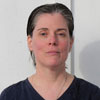What is Dianic Wicca

Dianic Wicca is a type of Wicca that traces its lineage back to the 1970s in the United States. Like all Wiccan traditions, it grew out of the original form of Wicca created by British occultist Gerald Gardner in 1940s and 1950s. However, the Dianic tradition disregards the dualism found in most forms of Wicca and emphasizes the Goddess more than the God.
In 1971 American pagan Morgan McFarland first applied the term "Dianic" to her spiritual path after being inspired by The Witch-Cult of Europe, a famous book published in 1921 by British anthropologist Margaret Murray. This book postulated that the European witches targeted by medieval witch-hunts were not just dabblers in hexes and superstitions but were an organized pagan resistance guarding an ancient Goddess religion dating back to the Stone Age. Murray's theory has since been discredited, but the idea of an ancient Goddess religion has greatly influenced modern Wicca.
Also in the early 1970s, Hungarian-American feminist author Zsuzsanna Budapest began to create a type of paganism that she would term Dianic. To distinguish between the two spiritual paths, McFarland's tradition is now known as Old Dianic or McFarland Dianic, and Budapest's tradition is known as Dianic Wicca.
The McFarland Dianic Tradition permits mixed covens of males and females. Some covens may be restricted to women only, but that is at the discretion of each High Priestess. The female-only model is not built into the overall tradition. A coven consists of a High Priestess, a High Priest, a Maiden, and the initiates who are also called priests and priestesses. A grove is an associated group of neophytes who are studying to be initiated into the coven at the invitation of the High Priestess. The McFarland Dianic witches believe that the Goddess is the immortal creator who created herself and everything else whereas the God is her moral consort and lover. This differs from other forms of Wicca and paganism in which Goddess and God are seen as immortal and equal.
The Dianic Wicca Tradition has no place for males or the God, and practices in all-woman covens. They recognize the Triple Goddess of Maiden, Mother, and Crone and worship her by all the names given to her by all the world's cultures. As Budapest states on her website at https://www.zbudapest.com/dianic-wicca-witch.html, "Women's Spiritual Mysteries are the core of the community, where women take care of important matters, bless the children and the house, provide psychic protection against bad things, even attempt to make rain if there was a draught. This women-only activity created a rich culture of embroidery, cooking and baking, feasting and dancing." Another way in which the Dianic Wicca Tradition differs from traditional Wicca is a willingness to ignore the Wiccan Rede (An it harm none, do what you will) and work magic against those who harm women.
Stay current with the free, weekly Wicca site newsletter.
In 1971 American pagan Morgan McFarland first applied the term "Dianic" to her spiritual path after being inspired by The Witch-Cult of Europe, a famous book published in 1921 by British anthropologist Margaret Murray. This book postulated that the European witches targeted by medieval witch-hunts were not just dabblers in hexes and superstitions but were an organized pagan resistance guarding an ancient Goddess religion dating back to the Stone Age. Murray's theory has since been discredited, but the idea of an ancient Goddess religion has greatly influenced modern Wicca.
Also in the early 1970s, Hungarian-American feminist author Zsuzsanna Budapest began to create a type of paganism that she would term Dianic. To distinguish between the two spiritual paths, McFarland's tradition is now known as Old Dianic or McFarland Dianic, and Budapest's tradition is known as Dianic Wicca.
The McFarland Dianic Tradition permits mixed covens of males and females. Some covens may be restricted to women only, but that is at the discretion of each High Priestess. The female-only model is not built into the overall tradition. A coven consists of a High Priestess, a High Priest, a Maiden, and the initiates who are also called priests and priestesses. A grove is an associated group of neophytes who are studying to be initiated into the coven at the invitation of the High Priestess. The McFarland Dianic witches believe that the Goddess is the immortal creator who created herself and everything else whereas the God is her moral consort and lover. This differs from other forms of Wicca and paganism in which Goddess and God are seen as immortal and equal.
The Dianic Wicca Tradition has no place for males or the God, and practices in all-woman covens. They recognize the Triple Goddess of Maiden, Mother, and Crone and worship her by all the names given to her by all the world's cultures. As Budapest states on her website at https://www.zbudapest.com/dianic-wicca-witch.html, "Women's Spiritual Mysteries are the core of the community, where women take care of important matters, bless the children and the house, provide psychic protection against bad things, even attempt to make rain if there was a draught. This women-only activity created a rich culture of embroidery, cooking and baking, feasting and dancing." Another way in which the Dianic Wicca Tradition differs from traditional Wicca is a willingness to ignore the Wiccan Rede (An it harm none, do what you will) and work magic against those who harm women.
Stay current with the free, weekly Wicca site newsletter.
You Should Also Read:
History and Traditions

Related Articles
Editor's Picks Articles
Top Ten Articles
Previous Features
Site Map
Content copyright © 2023 by Ro Longstreet. All rights reserved.
This content was written by Ro Longstreet. If you wish to use this content in any manner, you need written permission. Contact Ro Longstreet for details.




